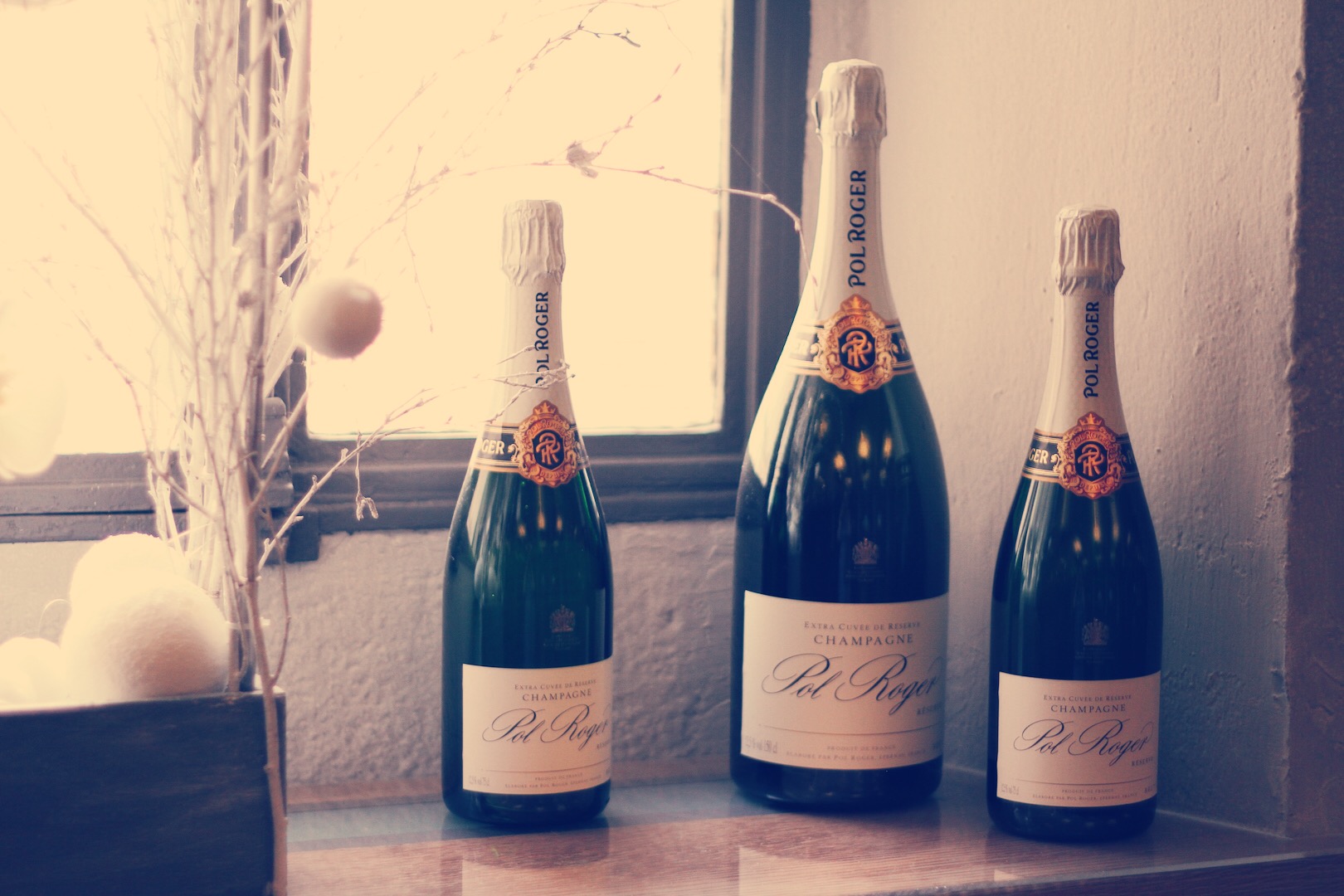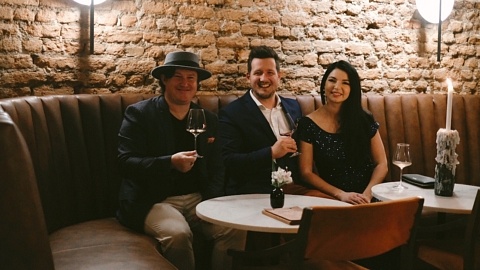So you’ve arrived at the decision that you would like to purchase a bottle of bonafide French champagne. Félicitations! However, unless you already have something particular in mind, at this point you’ll only have managed to narrow down your choice to 300 Champagne houses and 15,800 independent winegrowers in the region (okay, or substantially fewer options, depending on the availability of champagne in your area – maybe I’m being a tad dramatic). We’re not sure about you, but to us that still sounds très daunting. Sure, it’s not difficult to find a bottle of Moët or Veuve Clicquot in most places, but what if you’re looking for something a little different that’s still the real deal, without having to Airbnb your sofa to pay for it?
Over the Summer I (Kristen) visited two houses in Champagne that produce a range of excellent quality champagnes, which so happen to be widely available worldwide. My wonderful Champagne friends, Martin and Philippe-Alexandre, bestowed me with some pro tips for choosing that perfect bottle. Read on to learn the way of the bubble…
Martin and Philippe-Alexandre are two friends of ours who are heavily involved with champagne in Champagne. Martin had the good fortune of being born into a Champagne family and has continued working closely with his clan at Pol Roger, and Philippe-Alexandre has used his French-Canadian wits, talents and passion for the vine to become one of the key individuals at Champagne Ayala.
I couldn’t have had better hosts for my time in Champagne, and the respective tours they gave me of Pol Roger and Ayala refreshed my perspective on my favourite bubbly beverage. While both of these houses have long and varied histories, charting centuries of royalty, war and all the other shenanigans the French are known for, they are both brilliant examples of modern-day organisations that are forging ahead both technologically and philosophically, without losing their roots. Also, did I mention the Champagne is delicious?
While swanning around cellars and vineyards like a Champenoise my dear friends enlightened me about how to pick out a great bottle – so here’s what I learned to consider when making this extremely important decision:
- Region
This might be an obvious one but kind of needs to be mentioned in any conversation about champagne – if the word “champagne” isn’t emblazoned on the bottle, then it’s not champagne in the bottle (in a previous post we explained why it’s a protected name). There do happen to be sub-regions in Champagne such as the Côte des Blancs and Montagne de Reims, but it’s rare to see them indicated on the front label of a bottle as champagne is often made by blending grapes from vineyards in different sub-regions. So I guess the takeaway is that the umbrella region of Champagne is the most important thing here, and sub-regions aren’t the be-all and end-all unless you’re pretty advanced in your bubbly know-how.
2. Price
Champagne doesn’t have much of a reputation for being kind on the wallet, but don’t be disheartened – it is possible to get a good bottle of champagne for less than 20 euros. If you’re looking for something reasonably priced steer away from the big brand names and go for something a little more indie. Martin recommends Champagne Feneuil-Coppée and Champagne Nau as two less expensive champagnes that are damn good. That said, if you feel like splashing out, the big champagne houses produce perfectly delightful bubbles – you might just find yourself paying for a bit of branding.
3. Vintage/non-vintage?
The Champenoise enjoy a special privilege in France: they’re the only wine producers permitted to blend wine from different years. If there’s no vintage indicated on the bottle, then you can be sure that wine from different years has been blended to create the house style. Champagne houses generally try to keep the wine consistent from year to year, and blending different vintages helps achieve this. However, in exceptional years many houses release a vintage wine – and then you’ll see the year indicated on the bottle. Both vintage and non-vintage are good, but vintage champagnes tend to be made from higher quality grapes and cellar aged for longer (3 years minimum), so the flavours have time to become more complex.
4. Sweetness
Champagnes vary in sweetness, and the classification is kind of confusing. Here’s the ranking of terms that you’ll find on a bottle of Champagne to indicate sugar levels, from the driest to the sweetest:
- Brut Nature (no residual sugar)
- Extra Brut
- Brut
- Extra Dry
- Dry/Sec
- Demi-Sec
- Doux (the sweetest of the lot)
Told ya it didn’t make a lot of sense! My recommendation is to memorise the order or simply whip it up on google when you find yourself staring down a row of bottles in the wine aisle. Again, this comes down to preference – so pick what you like!
5. Grape variety
While champagne is usually a blend of all three grape varieites grown in Champagne – Pinot Noir, Pinot Meunier and Chardonnay – you do get champagnes that are made from two and sometimes only one of the varieties. Personally, my favourite champagne tends to be blanc de blanc – ‘white from white’ – which is champagne made using Chardonnay grapes. I find these wines tend to be very fresh and floral, while others appreciate the structure of champagne made from red varieties (blanc de noir). It’s fun to compare the different varieties, so look out (or taste out?) for the nuances if you find yourself sampling a flight of champagnes.
I hope you found these guidelines as useful as I did – there’s always so much more to consider the farther down the rabbit hole you go, but the most important thing to know is that it’s difficult to go wrong with champagne! If in doubt, Pol Roger and Ayala are both fantastic choices… ;)
Martin et Philippe-Alexandre – merci beaucoup et gros bises.
































2 Comments